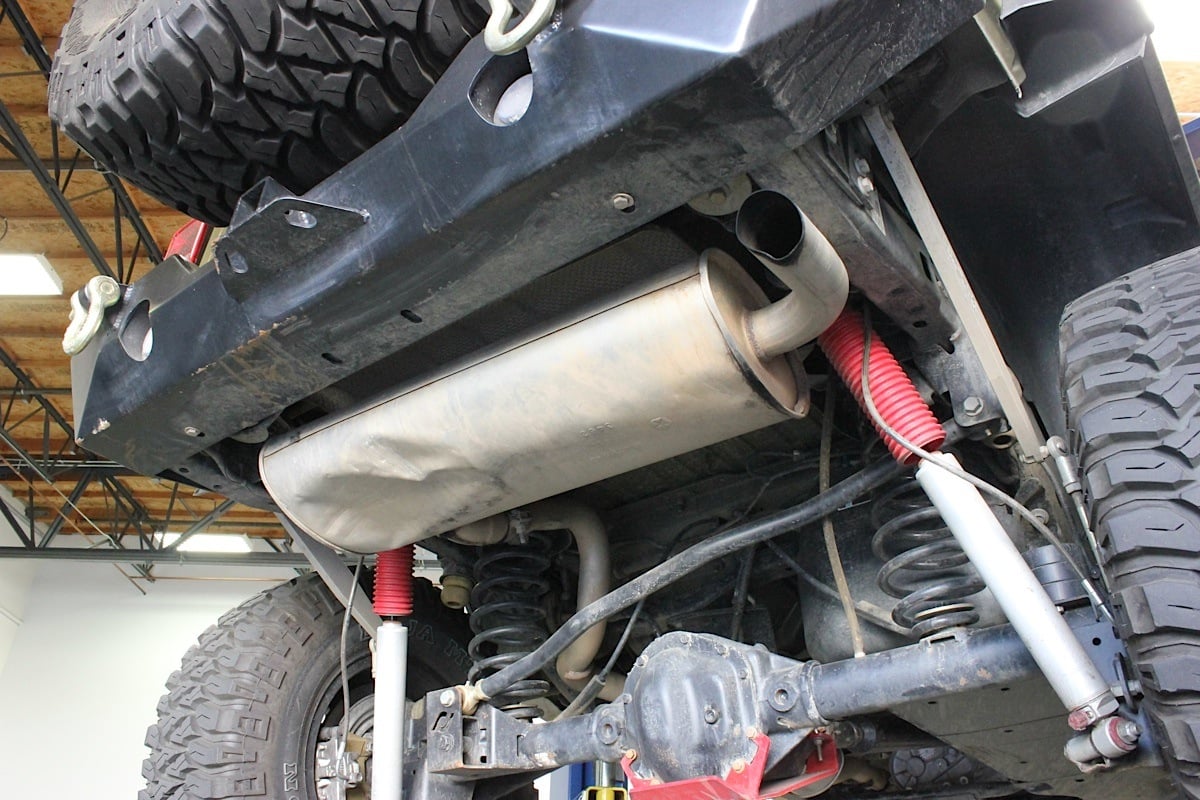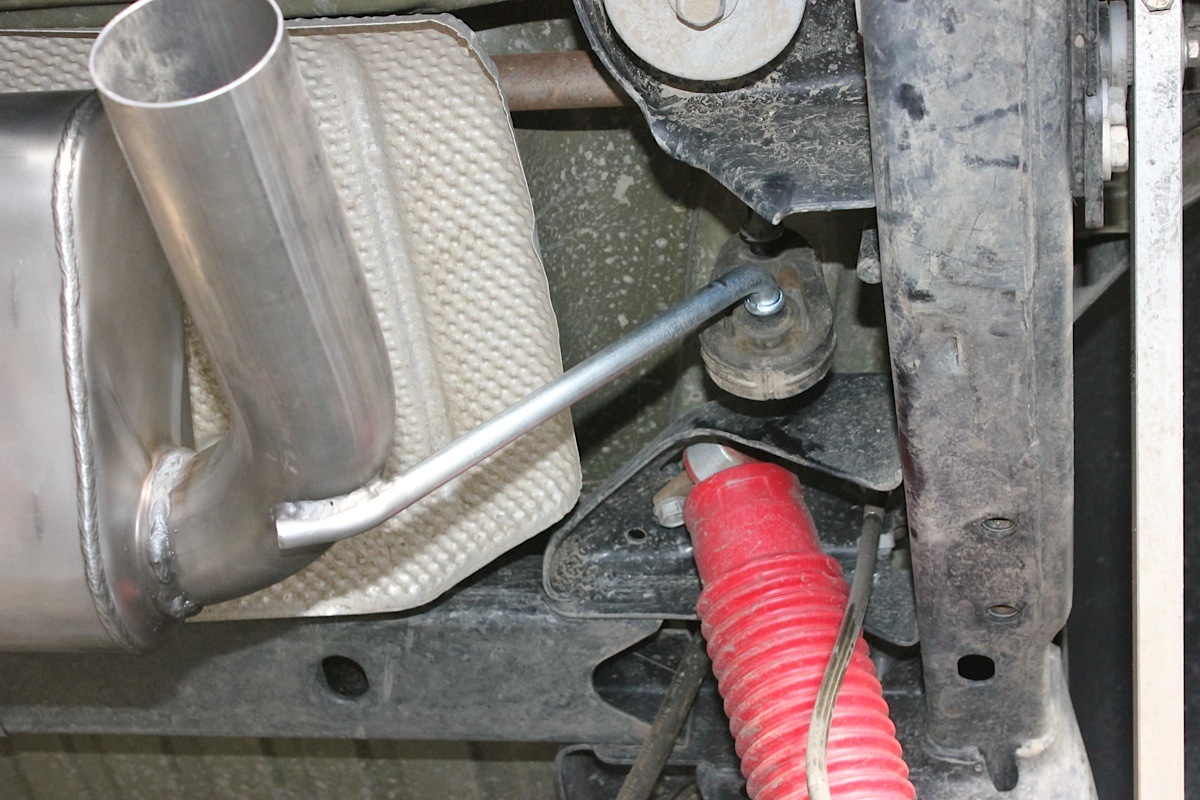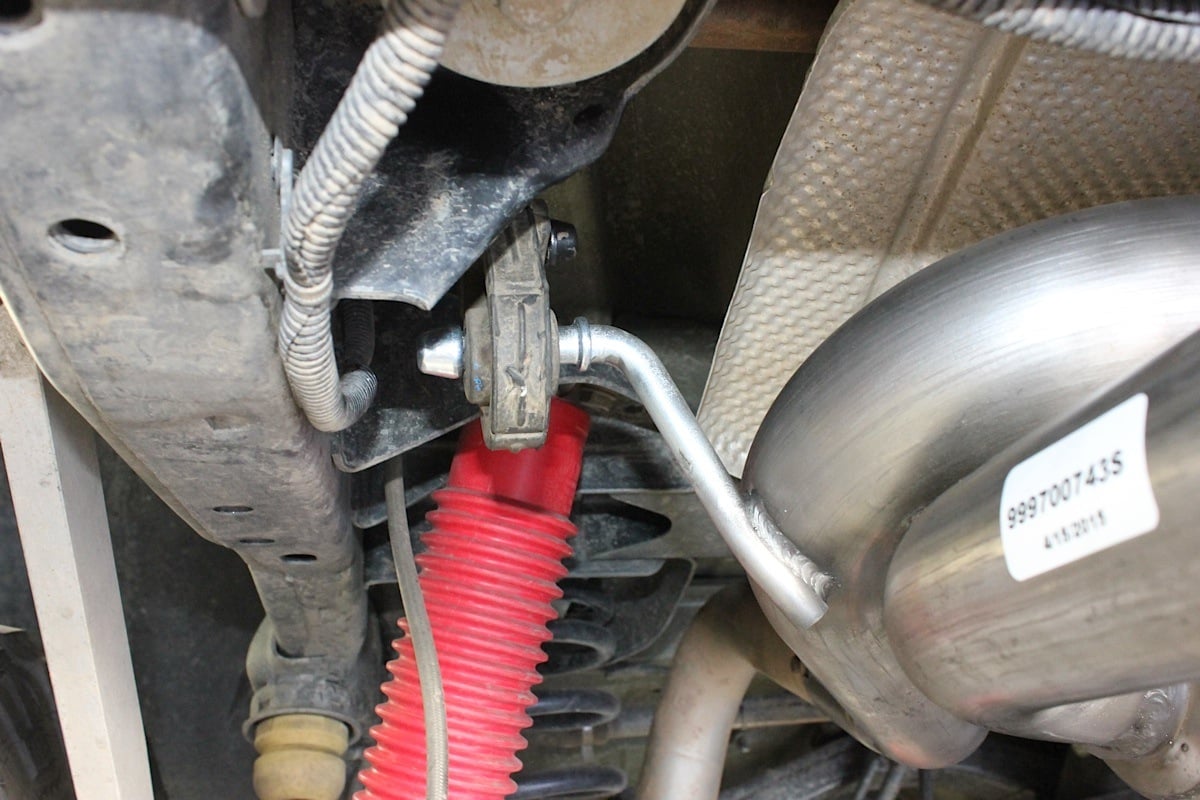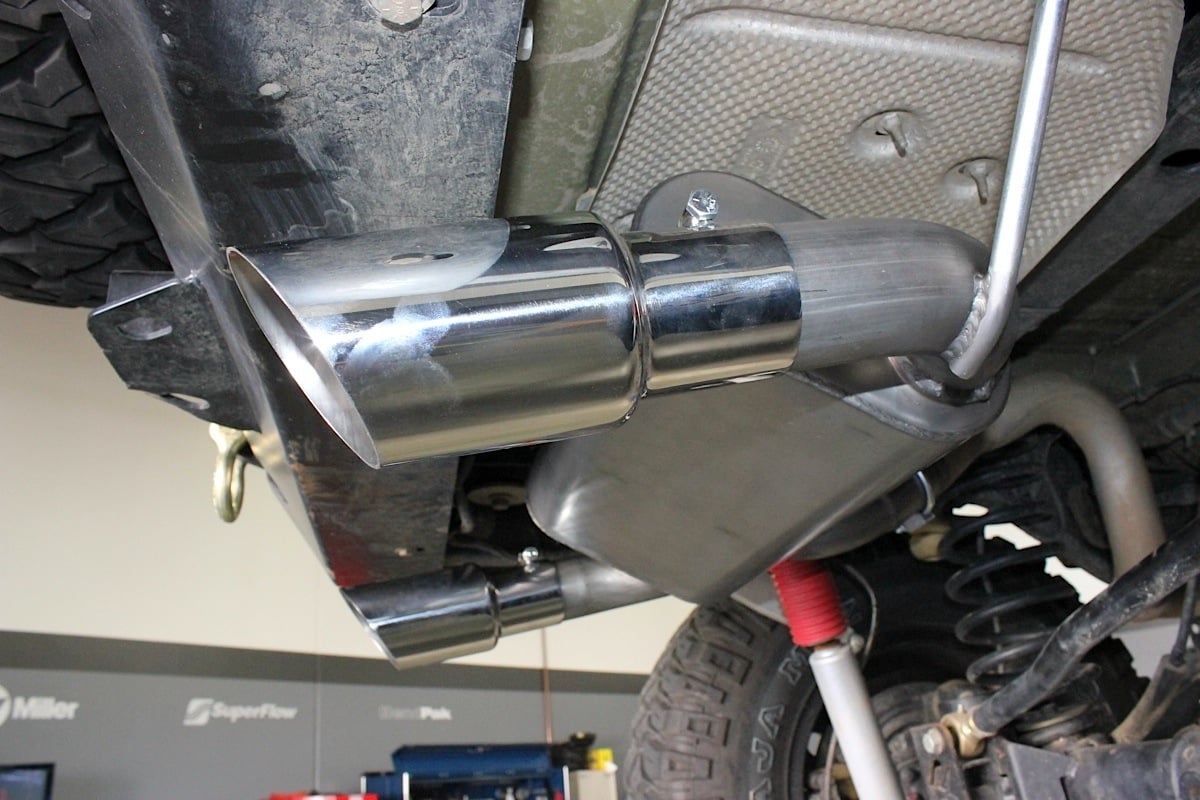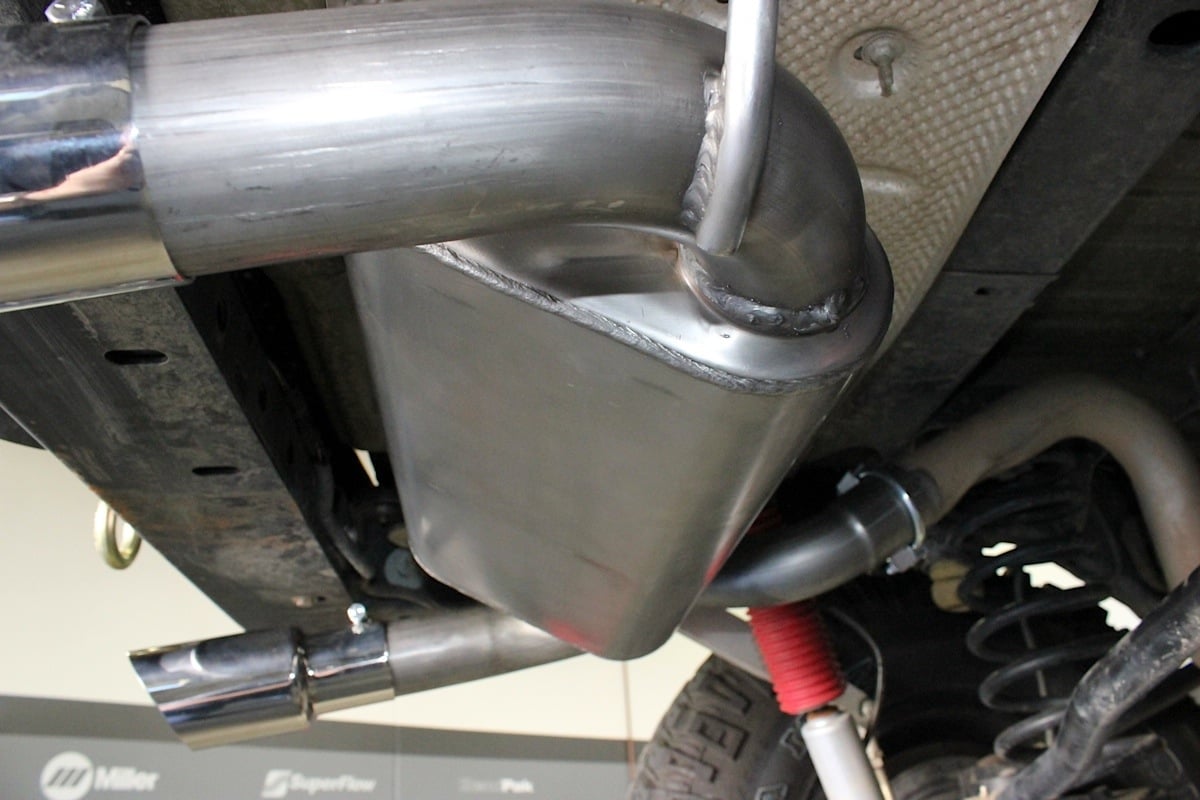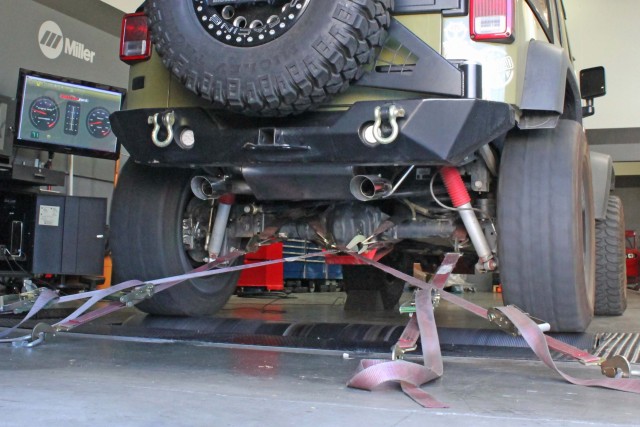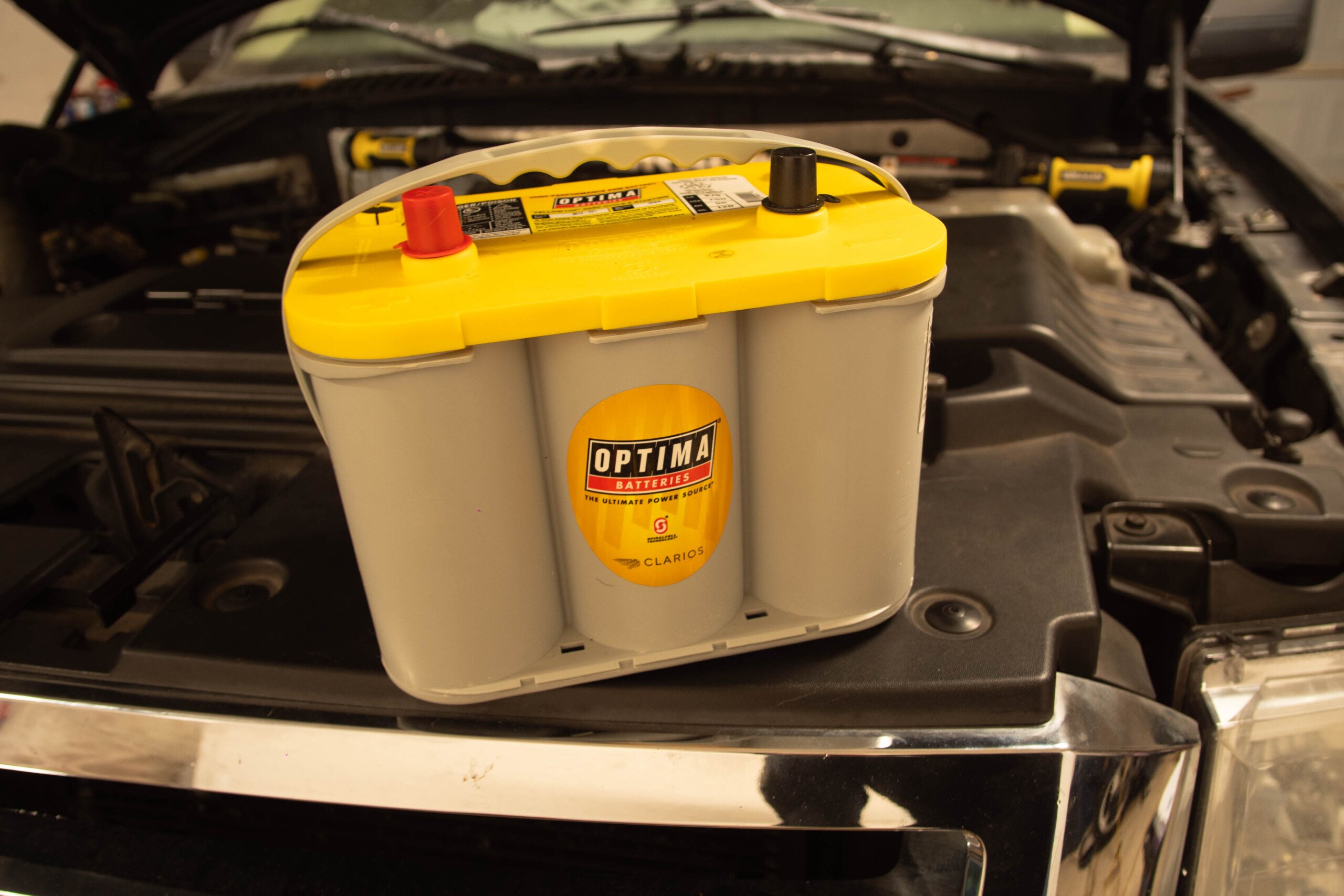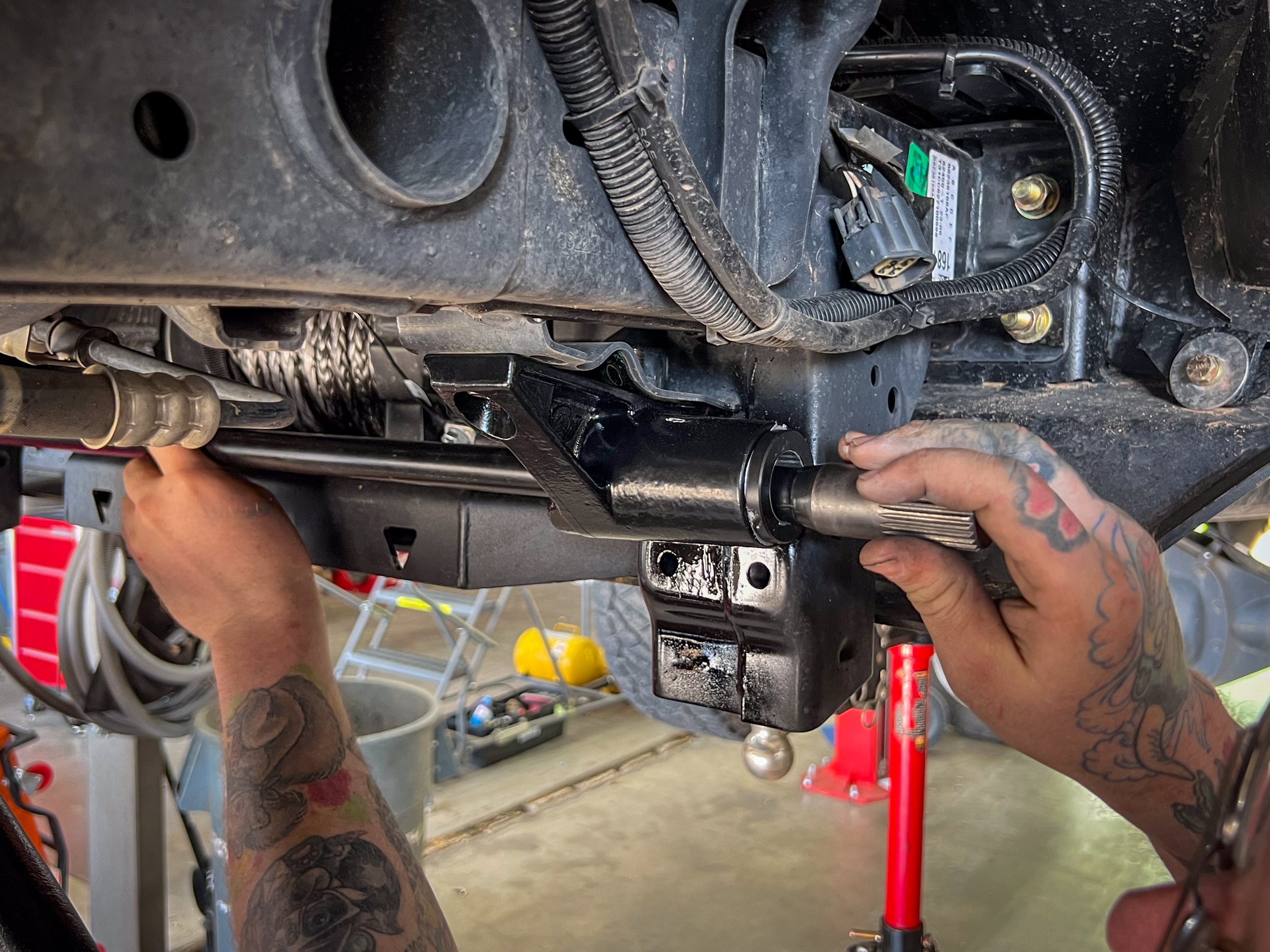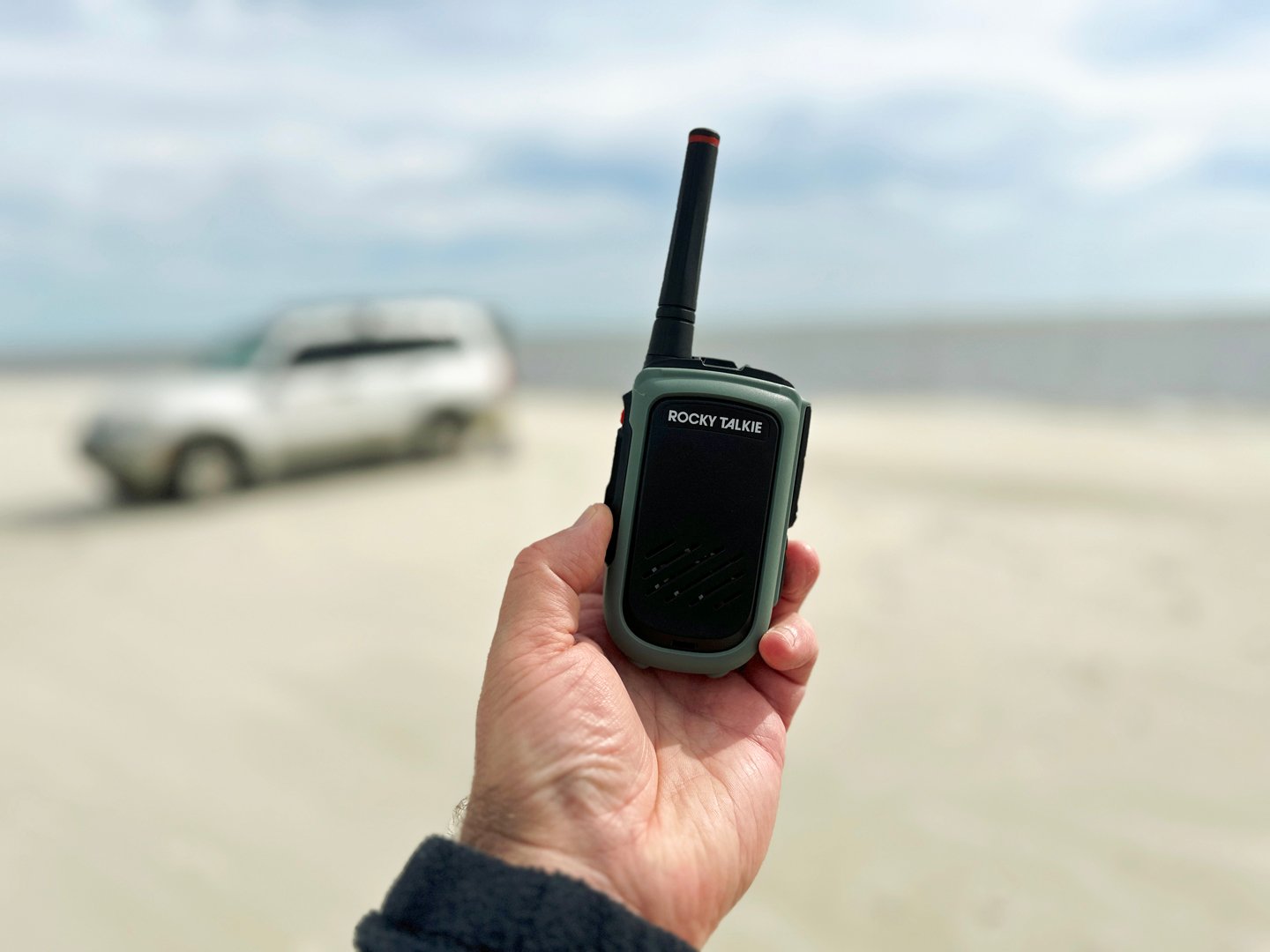 We all understand the concept of getting more power out of our engines, and there are a number of ways to accomplish that goal. You can build up the engine’s internals, or put a forced induction system on it. There are plenty of air intake systems that will bump up the horsepower and torque ratings, and there are also exhaust system alterations that will squeeze power out of your vehicle’s engine by freeing up the flow of fumes.
We all understand the concept of getting more power out of our engines, and there are a number of ways to accomplish that goal. You can build up the engine’s internals, or put a forced induction system on it. There are plenty of air intake systems that will bump up the horsepower and torque ratings, and there are also exhaust system alterations that will squeeze power out of your vehicle’s engine by freeing up the flow of fumes.
One of the simplest ways to gain power in terms of cost, labor time, and ease of installation is swapping out the stock exhaust for an upgraded product. The obvious upside to a performance exhaust over the factory setup is, of course, the expected increase in power output.
In some cases, there are also unexpected side benefits. We discovered during this particular Gibson Performance Exhaust system swap for our Project Sgt. Rocker 2013 Jeep Wrangler JKU that we also gained a better departure angle.
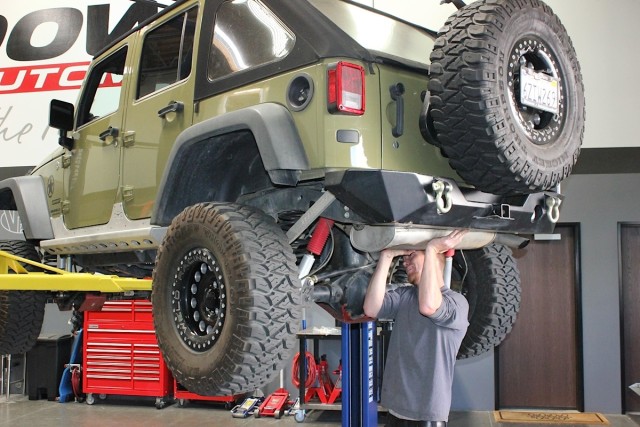
Sgt. Rocker was in need of a new cat-back system, but first the factory unit had to be wrangled out from underneath the rear end of the Jeep.
Now before you begin screaming about how that’s not possible, hear us out. If you draw a straight line from the trailing edge of the bumper to the trailing edge of the rear tires, and there is something interrupting that line, such as a muffler that keeps getting used as a skid plate, then you are effectively not getting all the departure angle inherently possible at the rear end of that vehicle. One look at the dents, dings, and scrape marks on the underside of the Jeep’s factory muffler, and we knew we had a problem.
Gibson Lesson
Then pickup trucks and SUVs got really hot in the early 1990s. That’s when Gibson used its years of experience engineering and building exhaust systems to dive headfirst into the burgeoning sport truck and 4×4 performance exhaust market.
Along the way, Gibson had also learned how to design its exhaust systems to lower the level of noise in the cab of the vehicle. In addition, the other upside of Gibson Performance Exhaust products is that the company makes sure that all its exhaust systems are emissions legal in all 50 states.
New products are constantly popping out of the doors at GPE, and we talked to Shawn Gibson about the company’s latest goodies. “Our goal is to produce the best performance exhaust systems possible, while keeping them all 50-state legal. Why build something the customer has to worry about putting on his rig?”
The trail abuse that the OEM muffler suffered (left) was evident once we got the Jeep up on the lift and began loosening the clamp tying it to the catalytic converter. The hanger rods (one on each end of the muffler) were a bit tough to remove, and we had to use a shot of WD-40 and a pry bar to loosen them (right) from the OEM rubber hangers.
Gibson also gave us some insight into choosing an exhaust system based on where we live. “We offer stainless steel and aluminized systems,” he said. “If you live in the Southwest, or any other dry environment where they don’t salt the roads during winter, our aluminized exhaust systems are just fine. If you live in snow country or where you are driving in mud a lot, our stainless steel products are your best choice.”
On-going research and development is what keeps us in the game. – Shawn Gibson
The company designs its products in an R&D center complete with multiple engine and chassis dynos. Flow bench and audio testing equipment is also part of the Gibson design routine. Once prototypes are finalized, new products (as well as all the existing exhaust system components) are manufactured on computerized, numerically controlled, CNC mandrel tube benders. That way the exhaust system’s design parameters remain consistent for every production run.
Solution Found
We were looking for a cat-back system for our 2013 Jeep Wrangler JKU project (Sgt. Rocker) and after scanning the exhaust system horizon, decided to check out the Cat-Back Stainless Steel Split Exhaust (P/N: 617303) for Sarge. Basically a plug-and-play product, it required no cutting, welding, or adjustments to the rest of the Jeep’s exhaust system to achieve a completed installation.
The two hanger rods, one on each end of the Gibson muffler (top right and left), were inserted into the reused OEM rubber hangers. Then the kit-suppled muffler clamp (bottom) was installed on the slip joint connecting the muffler to the catalytic converter.
Consisting of a muffler developed to release a little more power and keep reasonably quiet, the Gibson cat-back system we installed was manufactured from stainless steel for durability and corrosion resistance. Entry and exit tubes are 2.5-inch diameter stainless steel, and the kit is supplied with 3.5-inch-exit diameter polished stainless steel tips. All the necessary hardware is included. Dutifully following the installation instructions, we disconnected the battery before beginning the job to allow the Jeep’s ECU to reset and recognize the new exhaust.
The most difficult part (seriously) of this installation was the removal of the factory cat-back exhaust system. The slip-joint connection between the outlet pipe from the catalytic converter and the inlet pipe to the new cat-back muffler system had seized up during the year or more of Sgt. Rocker’s continual use on- and off-road. It took a considerable amount of twisting, and even the liberal use of a rubber mallet on the leading edge of the factory muffler, to get the two pipes to let go of each other after we removed the band clamp from the slip-joint and pulled the two hanger rods out of the rubber hangers.
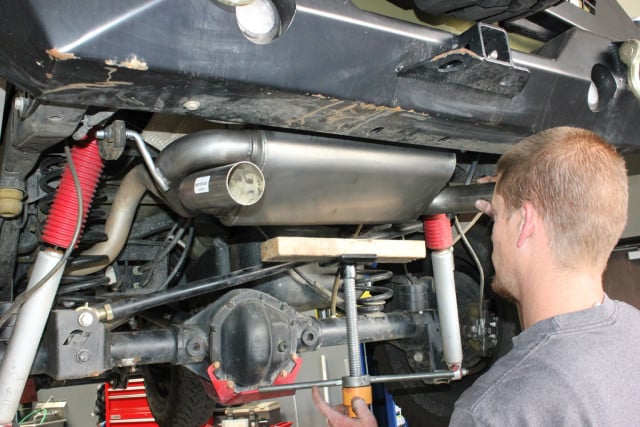
A tall jack stand (with a 2×4 used as a buffer) helped hold the Gibson cat-back system in place while it was being installed.
Next, we used one of our BendPak jacks (with a block of wood to act as a buffer) to support the new Gibson cat-back system in place while we slipped its inlet pipe onto the factory catalytic outlet pipe. Once that was accomplished, the Gibson system’s two hanger rods were inserted into the factory rubber exhaust hangers. Only then, when the position of the muffler had been adjusted properly, was the kit-supplied clamp placed around the connection of the two pipes and tightened.
Finishing Touch
The final step of the installation was to place and secure the polished stainless steel 3.5-inch tips on the two exit pipes of the Gibson muffler. All that was required was to clock the tips into the position we desired (slash-cut ends sloping upward and lined up evenly with the trailing edge of the rear bumper), and then tighten the kit-supplied hardware so the shiny tips were firmly secured to the muffler’s exit pipes.
The Gibson stainless steel tips were installed last (top). We installed both stainless tips so that their slash-cut ends were perfectly aligned (lower left) with the trailing edge of the rear bumper. The Gibson muffler is not only tilted, but tucked up higher (lower right) than the OEM muffler was under the rearend of the Jeep.
Now came the testing. We removed Sgt. Rocker from the BendPak car lift upon which it had been hoisted to make the Gibson cat-back system installation even easier, and then strapped it down tightly to our Dynojet dynamometer. Prior to the installation of the cat-back upgrade, we had recorded peak power outputs of 314.1 hp and 264.7 lb-ft. of torque. With the new Gibson system in place, the Jeep was putting out peaks of 320.3 hp and 263.2 lb-ft. of torque.

Sgt. Rocker made a bit less torque after the installation, but managed to pick up an extra 6.2 hp in the process. Also, the gains came earlier on in the rev range versus the previous setup.
The secondary gain from the installation of Gibson’s cat-back system on our 2013 Jeep Wrangler JKU project was the effective increase in clearance on the back end. Not only is the Gibson unit smaller in size overall than the OEM muffler, but it is also tucked up under the rear bumper much better.
The orientation of the new cat-back system helps, too. The factory muffler hung flat, but the new Gibson muffler is tilted at an angle to create less of an obstruction for trail hazards. But what about the sound?
Acceleration is where we heard the biggest difference in Sgt. Rocker. Back on the stock setup, the Jeep had a high-pitched whine that would climb higher and higher as the revs went up. With the new Gibson kit installed, that whine went through puberty and became a more low-pitched bellow all through the rev range.
Idling produced a deep tone that didn’t shake the cabin, but was definitely audible. Once on the freeway, the grumbling was accentuated but didn’t overpower the normal tone of a conversation or song on the radio.
So all the way around, we got a pretty sweet deal for Sgt. Rocker with the new Gibson cat-back setup. The Jeep has a little more power, which everyone can agree is a good thing, and the Gibson cat-back provides greater clearance than the factory cat-back allowed. The frosting on the cake, though, was the sound. Instead of the raspy buzz that the factory system produced, the Gibson Cat-Back Stainless Split Rear Exhaust exhibited a nice low growl that sounds very cool.
The difference between the OEM cat-back (above left) and the Gibson cat-back (above right) is astonishing. The Gibson cat-back added an aggressive look to the Jeep, especially when viewed from the rear (bottom) during our post-installation dyno tests.


